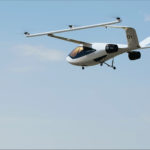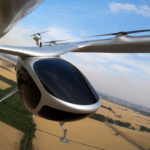The technology needed to achieve zero-emission flight across all sizes of aircraft will be available within 20 years, according to Val Miftakhov, the founder and CEO of powerplant designer and manufacturer ZeroAvia.
ZeroAvia, a leader in zero-emission aviation, is initially targeting a 300-mile range in 5–20 seat aircraft, followed by up to 1000-mile range in 40–80 seat aircraft.
Flight tests
Based in the UK and the US, the company has already secured experimental certificates for its two-prototype aircraft from the CAA and FAA, passed significant flight test milestones, secured a number of key partnerships with major aircraft OEMs and major global airlines, and is on track for commercial operations in 2024.
Miftakhov said he was “aiming to revolutionise the aviation industry” with the technology.
Hydrogen transition
He said: “We expect all sizes of commercial aircraft to be transitioned to hydrogen. Most of that will happen with hydrogen eclectic, some of that will happen with a combination of hydrogen-electric or hydrogen fuel cells and combustion, perhaps in turbines, in some hybrid fashion.
“But over time all of them will move to hydrogen. We can get the entire aviation industry to zero emission. And not just CO2 zero emission, but also all the other pollutants – nitrogen oxides, particulates, high temperature water vapour up in the atmosphere.”
Timeline
Focusing in on the timeline for ZeroAvia, he added: “In about three years we expect our first products to enter into service, for 10-20 seat smaller commuter type planes. Two years after that, large turboprops. And then we go higher and higher in seat counts, and larger aircraft, longer distances.
“Within 20 years we will have technology for all sizes of aircraft. Then it is a matter of how fast the adoption will occur. The typical aeroplane lasts 25-30 years in service. If there is no additional incentive to replace the fleet then you can expect that long of a transition. That would obviously put us beyond 2050 [the target year for net zero emissions].
“So we are going to need some support from the governments and the broader ecosystem to accelerate that transition.”
Energy partners
Miftakhov said ZeroAvia had partnered with Octopus Energy in the UK to build a joint hydrogen production and refuelling station at their research and development facility at Cotswold Airport, and is simultaneously carrying out infrastructure research on how green hydrogen production connects to the electrical grid.
“Instead of additional load or additional burden on the electrical grid, we can actually help the grid to incorporate more renewable power,” he said.
Subscribe to the FINN weekly newsletter

